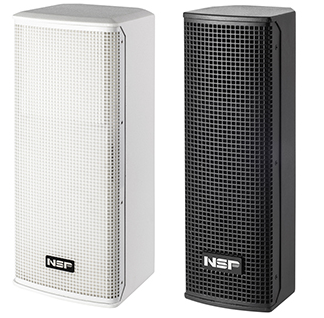How to Set Up Monitor Speakers for the Perfect Listening Experience?
Setting up monitor speakers correctly is crucial for achieving an accurate and immersive listening experience, whether you’re producing music, mixing audio, or simply enjoying high-fidelity sound. Poor placement and calibration can result in imbalanced frequencies and distorted sound, which can negatively impact your ability to hear true audio details. In this guide, we’ll explore how to optimize monitor speakers for the best possible performance in your listening environment.

Understanding Monitor Speakers and Their Importance
1. What Are Monitor Speakers?
Monitor speakers, also known as studio monitors, are designed to provide flat and uncolored sound reproduction. Unlike consumer speakers that enhance certain frequencies, monitor speakers aim for accuracy, making them essential for professional and high-fidelity listening environments.
2. Why Proper Monitor Speaker Setup Matters?
Setting up monitor speakers correctly ensures that:
- Sound is accurately reproduced without coloration.
- Stereo imaging and spatial depth are correctly perceived.
- Frequency balance is optimized for mixing and mastering.
- Listening fatigue is minimized with proper positioning.
How to Choose the Right Monitor Speakers for Your Space?
1. Consider the Size of Your Room
The size of your monitor speakers should be appropriate for your space. Larger monitors may overwhelm small rooms with excessive bass, while smaller monitors might not provide sufficient low-frequency response in larger rooms.
2. Nearfield vs. Midfield Monitor Speakers
- Nearfield Monitors – Designed for close-range listening (3-5 feet away). Ideal for small studios.
- Midfield Monitors – Require more distance for optimal performance. Suitable for larger rooms.
3. Active vs. Passive Monitor Speakers
- Active Monitors – Have built-in amplifiers and are easier to set up.
- Passive Monitors – Require an external amplifier, offering more customization but needing careful matching.
Optimal Placement of Monitor Speakers for the Best Sound
1. Positioning Monitor Speakers at the Right Height
Your monitor speakers should be placed at ear level for accurate sound projection. If necessary, use adjustable stands or isolation pads to achieve the correct height.
2. Creating an Equilateral Triangle
For proper stereo imaging, position your monitor speakers and listening position in an equilateral triangle. The speakers should be angled inward at approximately 30 degrees, forming a perfect listening sweet spot.
3. Distance from Walls and Corners
Placing monitor speakers too close to walls or corners can result in excessive bass buildup and reflections. Maintain at least 12-24 inches of space between the monitors and walls for a more balanced response.
4. Using Isolation Pads or Stands
Isolation pads help reduce vibrations and resonance that can color the sound. Speaker stands allow for precise height and distance adjustments, improving accuracy.
Acoustic Treatment for Better Monitor Speaker Performance
1. Minimizing Reflections and Echoes
Uncontrolled reflections can create frequency imbalances. Acoustic treatment, such as foam panels and bass traps, can help absorb excess reflections and enhance clarity.
2. Using Bass Traps for Low-Frequency Control
Bass frequencies tend to accumulate in room corners, leading to muddy sound. Placing bass traps in corners can help manage these frequencies effectively.
3. Diffusers for Even Sound Distribution
Diffusers scatter sound waves evenly, reducing harsh reflections without overly dampening the room. They are particularly useful for mid and high frequencies.
How to Calibrate Your Monitor Speakers for the Best Sound?
1. Adjusting Volume Levels
Balance the volume of both monitor speakers to ensure accurate stereo imaging. Many studio monitors have input sensitivity controls to fine-tune the levels.
2. Setting the Right EQ and Filters
Some monitor speakers come with built-in EQ adjustments. Use these settings to compensate for room acoustics:
- High-Frequency Trim – Adjusts treble response.
- Low-Frequency Cutoff – Controls bass response based on room positioning.
3. Using a Measurement Microphone and Room Calibration Software
To fine-tune monitor speakers, use a calibration microphone with software like Sonarworks or ARC System to analyze room acoustics and adjust speaker output accordingly.
Common Mistakes to Avoid When Setting Up Monitor Speakers
1. Placing Monitors Too Close or Too Far Apart
- Too Close – Creates a narrow stereo field.
- Too Far Apart – Leads to poor imaging and phase issues.
2. Ignoring Room Acoustics
Even the best monitor speakers can sound poor in an untreated room. Investing in basic acoustic treatment enhances sound accuracy.
3. Over-Reliance on Speaker Bass
If your monitors lack sufficient bass response, consider adding a subwoofer rather than boosting low-end frequencies artificially.
Enhancing the Listening Experience with Additional Equipment
1. Using a Subwoofer for Extended Low Frequencies
A subwoofer can help handle deep bass frequencies, especially for electronic music and cinematic sound design. Ensure proper crossover settings to blend seamlessly with monitor speakers.
2. Audio Interface for Better Sound Quality
A high-quality audio interface ensures accurate signal conversion and provides balanced connections for monitor speakers.
3. Balanced Cables for Clean Audio Signals
Using balanced XLR or TRS cables reduces noise interference, ensuring cleaner audio playback from monitor speakers.
How to Set Up Monitor Speakers for the Perfect Listening Experience?
Setting up monitor speakers correctly is essential for accurate sound reproduction and an immersive listening experience. By optimizing placement, treating the room acoustically, and calibrating your speakers, you can achieve professional-level audio clarity. Whether you’re a producer, engineer, or audiophile, following these best practices will ensure that your monitor speakers deliver the best possible sound. Now that you know how to set up monitor speakers, it’s time to fine-tune your setup for the ultimate listening experience!